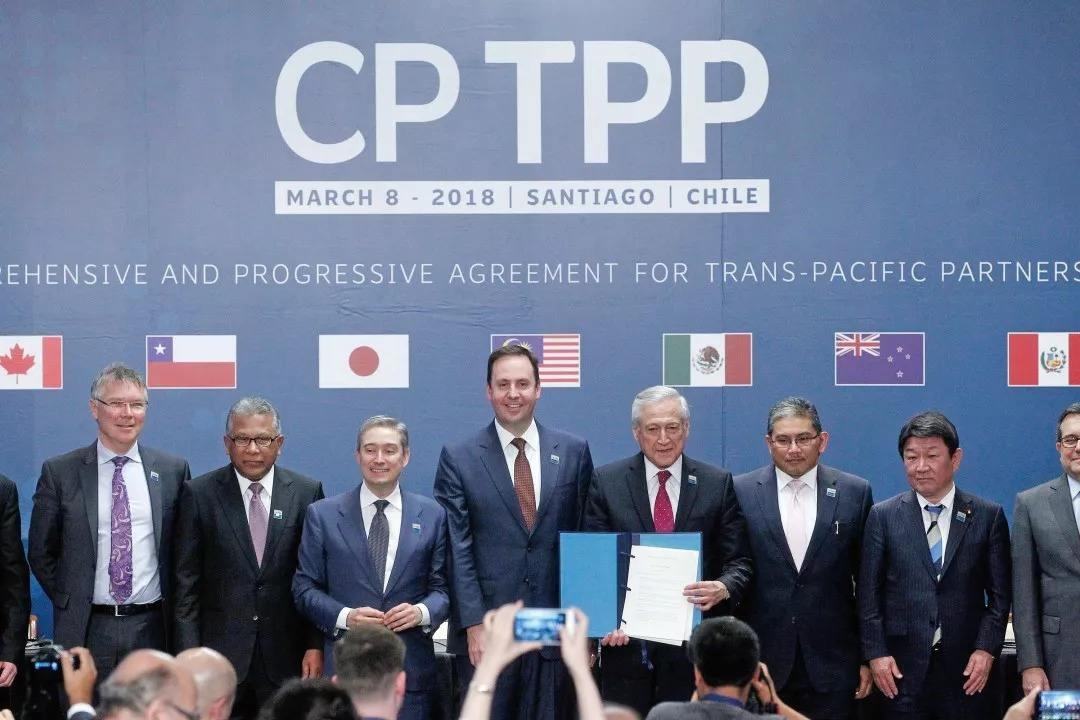It is precisely because of the closed-door policy implemented by the rulers of the Qing Dynasty that China lags behind the world and caused a hundred years of shame. Since the founding of New China, China’s reflection on “closed country” has never stopped. Five days after signing the RCEP agreement, the top leaders announced another major decision, which attracted great global attention.
According to the Global Times on November 21, the country’s top leaders said at an informal meeting of APEC leaders the day before that China would actively consider joining the Comprehensive and Progressive Trans-Pacific Partnership Agreement (CPTPP). From the six words “positively considering joining”, it can be seen that the next focus of work is to start a series of negotiations around joining the CPTPP.
The world deserves to be shocked ?
The predecessor of the Comprehensive and Progressive Trans-Pacific Partnership Agreement (CPTPP) is the Trans-Pacific Partnership Agreement (TPP). As we all know, this is an important tool jointly created by former U.S. President Obama and Japan to strengthen the geopolitical interests of the United States in the Asia-Pacific region to contain China, and is also regarded as one of Obama’s most important political heritages.
Although the first thing Trump did after taking office was to withdraw from the TPP, thanks to Japan’s efforts, the “TPP” changed its name to “CPTPP” and continued to perform, and also froze the 20 terms originally advocated by the United States in the current CPTPP agreement, and welcomed the “return” of the United States at any time. This shows that although the “TPP” has changed to a “vest”, it is just a change of soup or medicine. The main idea of curbing and encircling China has not changed at all, waiting for the United States to raise the anti-China flag again.4
Without the CPTPP of the United States, there can only be no tigers in the mountains and monkeys as kings. After more than three years of hard work, the CPTPP’s sense of international presence and influence are obviously limited, and the conspiracy of the United States to exclude China and Japan to expand its geopolitical influence has been declared bankrupt.
Now, China has said generously that it wants to “positively consider joining” such an anti-China agreement, which means so strong. Before this situation, it was like going to the meeting alone and “making friends” with everyone. How can such a mind and courage not shock the world?
The benefits of China’s joining the CPTPP are obvious. First of all, once China successfully joins the CPTPP, the anti-China agreement led by the United States and Japan will lose its original intention and be destroyed.
Secondly, CPTPP and RCEP are two complementary agreements. RCEP focuses on traditional goods trade, and CPTPP focuses on service trade, high technology, New business fields such as intellectual property rights and data flow are conducive to the establishment of complete trade agreements.
Thirdly, foreign high-quality products are introduced in the form of breaking tariff barriers, and domestic enterprises are forced to complete industrial upgrading with a strong sense of crisis, so as to improve the international competitiveness of China’s high-tech products.
But it is not easy for China to join the CPTPP smoothly. The TPP was negotiated during Obama’s term, which belongs to the Democratic camp. Trump, who belongs to the Republican camp, withdrew from the PTT as soon as he took office.
Now Biden, a Democrat, is almost 100% likely to return the United States. Moreover, because Japan has reserved a window for the United States to return to the CPTPP, basically as long as the United States requests, it can almost save even negotiation time to join.
Stimulated by RCEP, the United States will not only achieve self-return, but also pull more allies into the CPTPP and continue to build the agreement into a platform to contain and squeeze China.

On the contrary, it will take several years of negotiations for China to join the CPTPP. The TPP negotiations took 10 years and the RCEP negotiations took 8 years.
Even if China is willing to make concessions to a certain extent, under the premise that the United States enters the CPTPP step ahead of China, it will inevitably create greater resistance to China’s accession.
Similarly, the United States also has its own considerations. If the Republican Party regains power four years later, it is not impossible to “retreat” again. In order to prevent the United States from withdrawing from the group again, China can only be pulled in.
One moment and another! After four years of tossing and turning by Trump, the impact of the CPTPP is no longer the same as that of that year. Even if the United States joins the TPP, it cannot achieve the role of containment and containment of China.
China’s joining the CPTPP at this time will curb the isolationist and unilateralist trend of thought in the United States and be conducive to maintaining the order of globalization. If Washington does not join, it will be further isolated.



